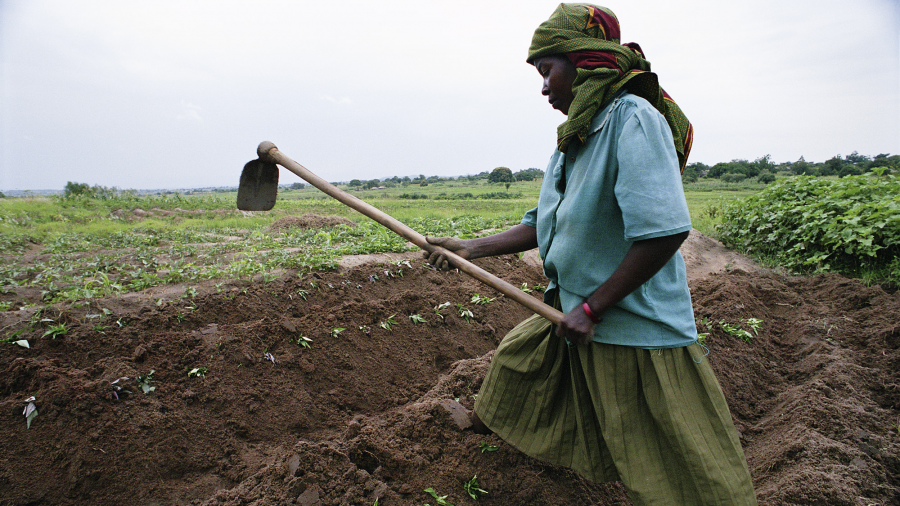
The acquisition or leasing of large tracts of land in the Global South by investors—both foreign and in-country—has grown dramatically. Many of these transactions represent agricultural investments in land where crop and livestock production will occur and where there is sufficient water. Indeed, water availability is often a major driver of such land purchases. Most of the acquired land, however, is in low- and middle-income countries where indigenous peoples often govern the land and water and view them as common property. Here, farms are small-scale, low-yield holdings where products go to local markets. Investors seek to make profits by increasing crop production through large-scale commercial agriculture, focusing on commodities with high-export market value. Investors often make promises up front that by bringing new technologies and jobs, their investments will benefit local communities and reduce poverty; however, these claims are highly contested. If investments fail, they can leave local people with degraded land and depleted water supplies, while also displacing them to marginal lands or forcing them to migrate long distances.
Decisions over the use and sale of land at global scales, as well as their associated social and environmental impacts, are not easy to trace—transactions usually lack transparency. Thus, understanding the extent and impact of large-scale land acquisitions (LSLA) requires detective-like research approaches in which quantitative and qualitative information together reveal patterns and stories. This lesson involves three sessions. This third session (Part 3) gives learners time to complete their exploration of textual documents (from the last session, Part 2) and ends with a homework assignment to develop a well-researched, evidence-based editorial suitable for an outlet such as The New York Times.
- Understand the environmental and social dimensions of LSLAs.
- Undertake socio-environmental research using both quantitative and qualitative data to reach an evidenced-based conclusion.
- Practice writing that seeks to influence others with an evidence-based argument.
A direct extension of the group work done in Part 2, this Part 3 session is suitable for a 50- or 75-min. session. Learners will have time to continue exploring textual material in groups or solo, and then some time to begin individual work on an editorial article. Each group may wish to consult with others in their group to ensure each editorial covers a slightly different angle on this complex issue e.g., region, water rights, economics, purchase vs. lease. Prior to the session, the instructor should upload the brief “Writing Editorials” guide to a site accessible to the participants. Timing for each of the below parts is not specified as that will be up to each group.
-
Have learners gather in their previously assigned groups or work solo, completing their exploration of textual material. Remind them that they should feel free to explore any material they want. (i.e., they are not limited to the articles provided to them in the last session.)
-
Instruct participants to use the quantitative and qualitative information they have reviewed in all the sessions to develop an evidence-based editorial suitable for an outlet such as The New York Times. This editorial is to be 600–800 words, and each participant should complete it individually and submit it to the instructor at some specified time. Point the learners to the shared site where the instructor had uploaded the “Writing Editorials – Brief Guidelines” document.
-
Are African land grabs really water grabs?
This editorial is useful for the lesson because it gives the instructor an example of an editorial focused on the issue. It is ~850 words in length. It is probably best not to share with the participants to avoid giving them a sense it should be a template for their own editorial.
Franco, J.C., Mehta, L., & Veldwisch, G.J. (2013, March 22). Are African land grabs really water grabs? CNN. https://www.cnn.com/2013/03/22/opinion/water-grabs-africa
-
The Global Farmland Rush
This editorial is well researched and well written. It provides a nice example of combining information that is authoritative with opinion.
Kugelman, M. (2013, February 5). The Global Farmland Rush. The New York Times. https://www.nytimes.com/2013/02/06/opinion/the-global-farmland-rush.html
-
The great land grab: India’s war on farmers
This is another useful example of an editorial. In it, a native Indian argues that the “land wars” in her home country must stop. It is an example of a forceful article although it does not provide a lot of evidence (e.g., citations) to support the claims.
Shiva, Vandana. 2011. The great land grab: India’s war on farmers. Aljazeera. https://www.aljazeera.com/opinions/2011/6/7/the-great-land-grab-indias-war-on-farmers